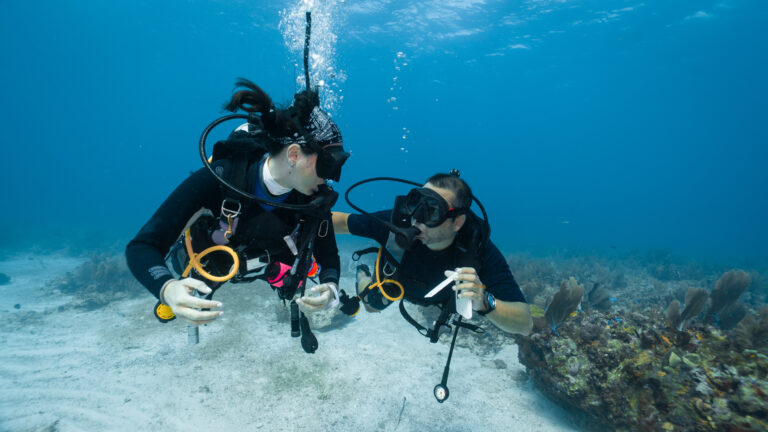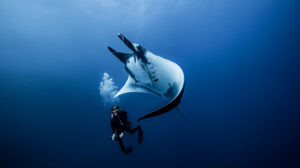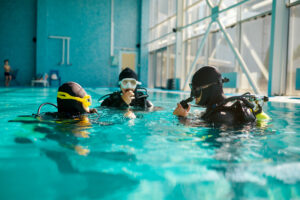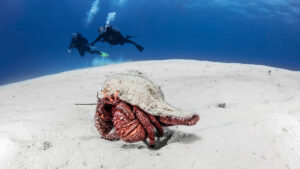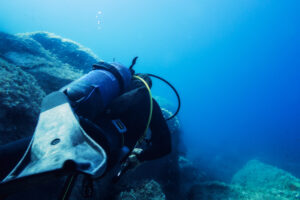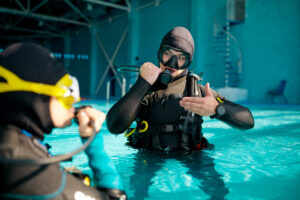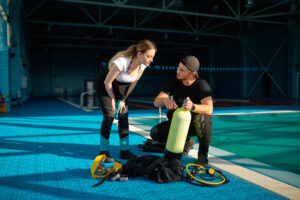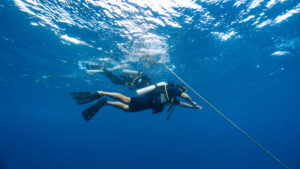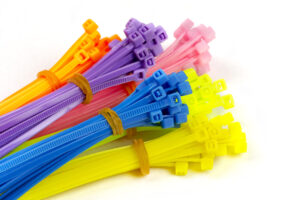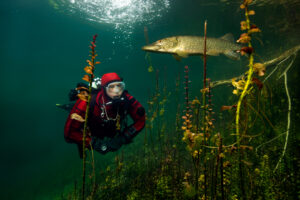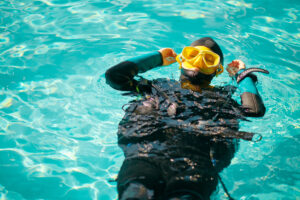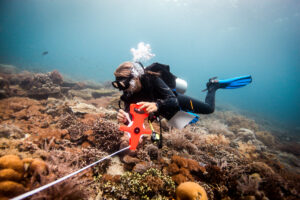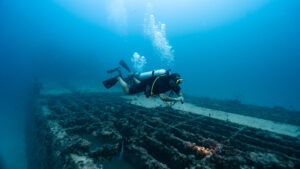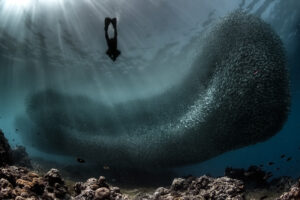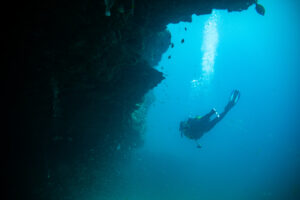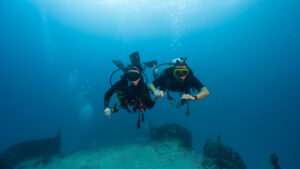What is a Active Addition Semi-Closed Circuit Rebreather Systems?
Active Addition Semi-Closed Circuit Rebreather (AASCCR) systems represent a sophisticated evolution in scuba diving technology, combining the advantages of closed-circuit rebreathers with innovations that enhance safety and usability. These systems are designed to optimally recycle exhaled gases, thereby extending dive times, reducing gas consumption, and minimizing decompression obligations. By actively managing the gas mix in the breathing loop, AASCCR systems offer divers a unique balance between simplicity and efficiency, making them particularly valuable in extended or deep diving scenarios.
Historical Development
Rebreather technology dates back to the early 20th century when the first prototypes were developed for military and industrial applications. The fundamental principle behind rebreathers is simple: to recycle the exhaled breath by removing carbon dioxide and replenishing oxygen, thus creating a closed breathing loop. Over the decades, this technology has evolved significantly. Early models were fully closed systems that required precise pre-dive calculations and manual adjustments during the dive to maintain the correct breathing mixture.
The transition to semi-closed systems introduced a new level of safety and convenience. These systems partially reuse the exhaled gas while constantly adding a small, controlled amount of fresh gas to the loop. The innovation of active addition in semi-closed systems marked a significant milestone, as it allowed for electronic control systems to actively manage gas mixtures based on real-time measurements of depth and exhaled gases, significantly enhancing both safety and efficiency.
Technical Description
An AASCCR system consists of several key components that work together to ensure the diver’s breathing gas is safe and appropriate for the depth and duration of the dive. These include:
- Gas source and addition mechanism: This component is responsible for supplying the necessary gases (usually a mix of oxygen and a diluent such as air or helium) into the loop. In AASCCR systems, the addition is controlled by sophisticated electronics that respond to sensor inputs.
- Scrubber system: The scrubber removes carbon dioxide from the exhaled breath using a chemical absorbent, typically soda lime, packed into a canister.
- Loop configuration: The breathing loop includes a mouthpiece, counterlungs (where gas is stored during the breathing cycle), and hoses that connect these elements. The design of the loop is crucial for ensuring comfortable and efficient breathing.
Functionality and Mechanics
In an AASCCR, the diver exhales into the loop, where the exhaled gas passes through the scrubber to remove carbon dioxide. The cleaned gas then receives an active addition of oxygen or a mixed gas from the controlled supply system before being available for re-inhalation. This process is regulated by electronic sensors and a microprocessor, which constantly monitor the partial pressures of gases in the loop and adjust the additions accordingly to maintain optimal breathing conditions.
The active addition mechanism is a critical feature of AASCCR systems. Unlike passive semi-closed rebreathers, which rely on fixed orifices or manually adjustable valves for gas addition, active systems use electronic valves controlled by the rebreather’s computer. This allows for precise adjustments in response to changing dive conditions, such as depth changes or increased exertion, which can affect the rate at which oxygen is consumed.
Operational Use
AASCCR systems are versatile and can be used across a range of diving applications. They are particularly favored in scenarios where dive duration and depth are significant factors—such as in technical and scientific diving—due to their efficiency in gas usage and reduced decompression needs. Recreational divers also benefit from these systems, enjoying longer dives with less environmental disturbance due to the reduced bubble release, which is particularly appreciated in wildlife-sensitive underwater environments.
Training for AASCCR systems is more rigorous than for open-circuit scuba gear, due to the complexity of managing the rebreather’s mechanics and the critical importance of understanding and responding to the system’s feedback. Divers must learn to interpret the data provided by the system’s sensors and computers, understand the implications of any deviations from normal operation, and be able to perform emergency procedures specific to rebreather malfunctions.
Advantages and Disadvantages
Active Addition Semi-Closed Circuit Rebreather systems present a number of advantages over both traditional open-circuit systems and other types of rebreathers. Advantages include:
- Gas Efficiency: By recycling exhaled gases and adding only the necessary amount of fresh gases, AASCCR systems use the breathing gas more efficiently, reducing the amount of gas needed per dive. This is particularly beneficial during long or deep dives where gas management is crucial.
- Reduced Decompression Requirements: Because these systems can maintain optimal partial pressures of oxygen throughout the dive, they can minimize inert gas uptake and thus reduce decompression times compared to open-circuit systems.
- Lower Noise Output: The absence of continuous bubble release makes AASCCR systems quieter, which is advantageous for wildlife encounters and covert military operations underwater.
However, these systems are not without their disadvantages:
- Complexity and Maintenance: The intricate components and the need for precise calibration and maintenance can be daunting for many divers. Regular maintenance is critical to ensure the safety and functionality of the system, requiring a higher level of commitment compared to simpler scuba setups.
- Cost Factors: The initial investment for an AASCCR system is significantly higher than for traditional open-circuit dive gear. Additionally, the ongoing costs of sensor replacements, battery maintenance, and absorbent materials can add up.
- Learning Curve and Training Needs: Extensive training is necessary to operate these systems safely. Divers must understand advanced concepts in dive physiology and rebreather mechanics, which demands both time and financial investment in specialized courses.
Safety Considerations
Safety is paramount when using any rebreather system, including AASCCR. The complexity of these systems introduces several potential failure modes, which divers must be trained to manage. Common risks include:
- Hyperoxia and Hypoxia: Mismanagement of oxygen levels can lead to dangerously high or low partial pressures of oxygen. Hyperoxia can cause oxygen toxicity, while hypoxia can lead to unconsciousness and drowning.
- CO2 Buildup: Failure of the scrubber system, whether due to exhaustion of the absorbent or improper packing, can lead to carbon dioxide buildup, which is dangerous and potentially life-threatening.
To mitigate these risks, AASCCR systems are equipped with numerous safety features:
- Redundant Sensors and Alarms: These systems typically include multiple sensors to monitor gas concentrations and alert the diver to potential problems.
- Automatic Diluent Addition: To prevent hyperoxia, most systems automatically add diluent if the oxygen concentration gets too high.
- Bailout Systems: AASCCR divers carry a separate open-circuit system as a backup in case of rebreather failure.
Emergency procedures are a critical part of AASCCR training, ensuring that divers are prepared to respond effectively to any issues that may arise.
Environmental Impact
The environmental impact of diving can be significant, particularly in sensitive marine ecosystems. AASCCR systems offer environmental benefits over open-circuit systems by reducing the amount of gas bubbles released into the water, which can disturb marine life. The quieter operation of rebreathers allows divers to approach shy wildlife more closely and reduces the acoustic footprint of diving activities.
Furthermore, by using less gas and producing less waste (such as disposable canisters used in some open-circuit systems), AASCCR systems contribute to more sustainable diving practices. These factors make them particularly appealing for scientific research and wildlife photography, where minimal disturbance to the subject is crucial.
Future Prospects
The future of Active Addition Semi-Closed Circuit Rebreather technology looks promising as advancements continue to enhance their safety, usability, and efficiency. Ongoing research focuses on improving sensor technology, increasing the reliability of electronic control systems, and reducing the size and weight of the units to make them more accessible to a broader range of divers.
Emerging technologies such as artificial intelligence could further revolutionize AASCCR systems by enabling smarter, adaptive gas management systems that adjust more precisely to the diver’s physiological needs and environmental conditions. Such innovations have the potential to make rebreather diving safer and more intuitive, potentially expanding their use in both recreational and professional diving communities.
Key Takeaways
In conclusion, Active Addition Semi-Closed Circuit Rebreather systems represent a significant advancement in underwater breathing technology, offering a blend of efficiency, environmental sustainability, and extended dive capabilities. These systems are crucial for complex diving operations that require precise gas management, extended bottom times, and minimal environmental impact. The evolution from traditional rebreathers to sophisticated AASCCR systems highlights a shift towards more adaptive, safer diving technology that can cater to the demanding needs of modern divers across various disciplines, from recreational to scientific and technical explorations.
Looking forward, the development and widespread adoption of AASCCR technology will likely continue to be driven by enhancements in electronic control systems, sensor accuracy, and overall usability. As the diving community becomes increasingly aware of the ecological impact of underwater activities, AASCCR systems stand out as a preferable option for environmentally conscious divers. By continually pushing the boundaries of what is possible in scuba technology, AASCCR systems not only enhance the safety and effectiveness of divers but also contribute significantly to the conservation of the underwater environments they explore.

